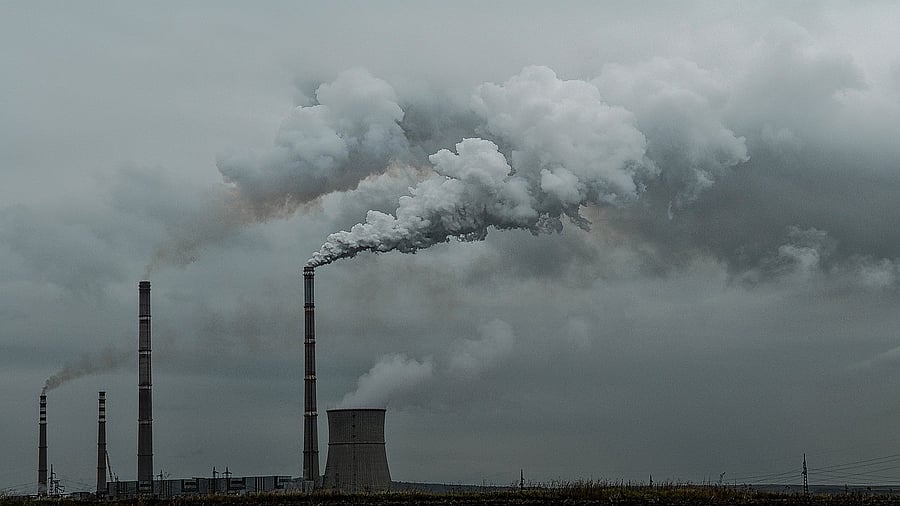
Representative image of pollution.
Credit: Pixabay Photo
Bengaluru: Karnataka’s greenhouse gas (GHG) emissions will increase from the current 175 million tonnes to 400 million tonnes by 2050, but there are tangible pathways to achieve a low-carbon future to reduce the emissions to 50 million tonnes, says a new report by Centre for Study of Science, Technology and Policy (CSTEP).
The report titled ‘Namma SAFARI: Low-Carbon Development Pathways for Karnataka’ seeks to start a dialogue on the much-needed ‘bottom-up approach’ even as India reckons the challenges to achieving net-zero emission by 2070.
Kaveri Ashok and 11 others from CSTEP came together to prepare Karnataka’s first systems dynamics model that considers how each of the sectors like energy, transport, industry, land use, etc., interact with each other even as they expand and grow to match the demand of an increasing population, urbanisation and gross domestic product (GDP).
Loose time frame
Laying down the scenario for different sectors, the study also indicated a loose time frame for the shift to happen. For instance, the steel industry is projected to produce 21 million tonne of steel per annum by 2030. Considering that they already account for 50% of industrial energy emissions in Karnataka, steel units need to look for adopting less polluting methods to make production of steel sustainable.
“Greening the iron and steel industry is integral to the state’s net-zero pathway,” the study said, noting that industry will slowly shift to electric arc furnaces while adopting hydrogen and biochar to achieve overall efficiency. However, the shift is dependent on the assumption that green hydrogen becomes cost competitive post 2040.
In the building sector, the share of burnt clay brick will continue to be 45%-50% till 2050. As demand for housing increases, the emissions from the sector will increase if a shift towards better construction materials is not achieved by 2050. This has to be complemented by adoption of passive cooling (25%–30% reduction in energy demand), electric cooking and other measures.
Low-carbon pathways
As other industries and sectors like transport transition to low-carbon pathways, the demand for electricity will more than triple with 408 TWh per annum by 2050. An aggressive reduction in coal-generated electricity has to be compensated by major capacity increase from solar, wind, pumped hydro storage and other green solutions to walk the low-carbon path.
“Our simulation indicates that by 2050, 133 GW of solar, 107 GW of wind, 8 GWh of PHS+RE, and 400 GWh of Battery + RE will be required to meet the electricity demand,” the study said.